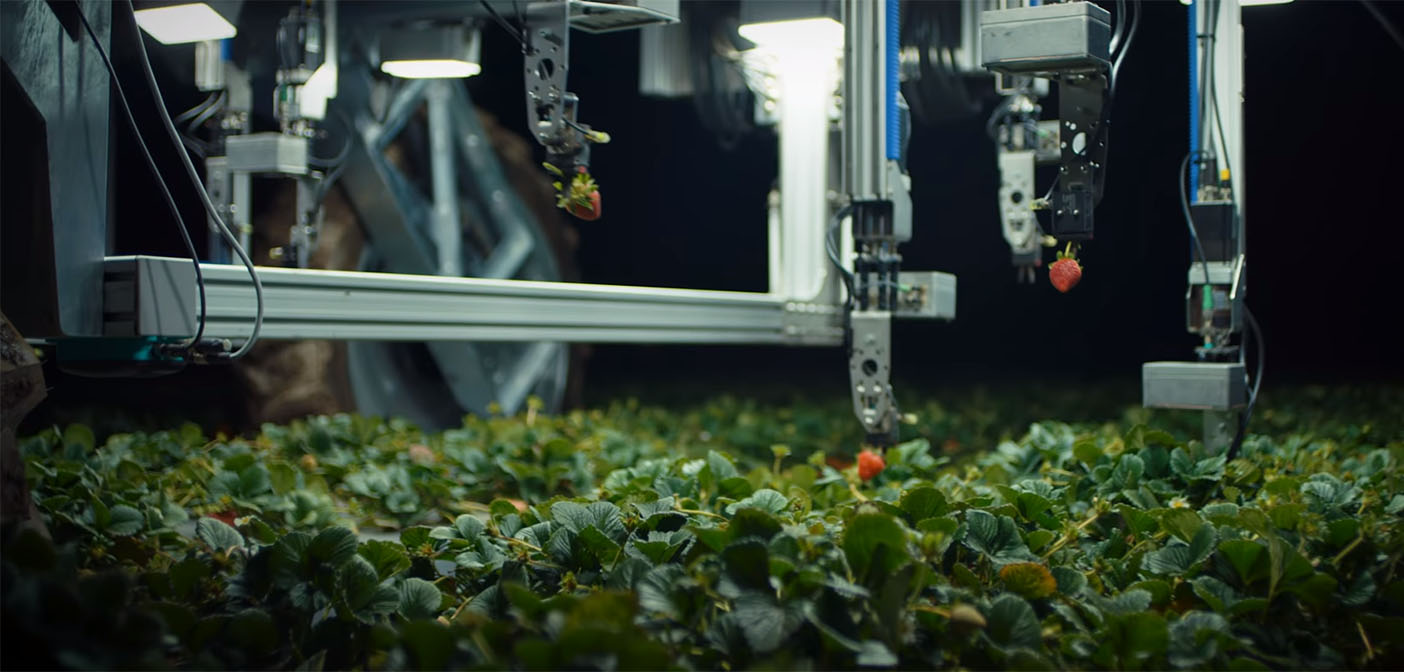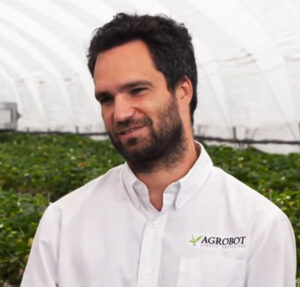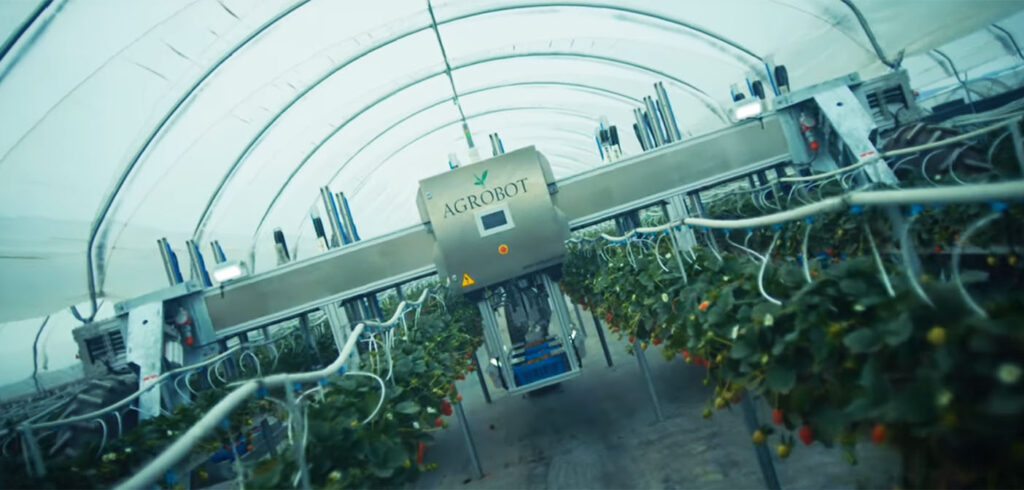It’s early morning in Driscoll’s berry field, Oxnard, California. In speckled sunlight, adjacent to a busy highway, a large metallic harvester with a small lime green head trundles slowly but methodically through rows of strawberries selecting the ripest and brightest of these fruits for its cargo.
Not far from these fields, there’s the greenhouse, canvas awnings sheltering row upon row of blossoms, as well as ripe and unripe strawberries. This same automatic harvester glides up and down rows of ceiling-supported growing platforms, swiveling its multiple cameras and utilising its AI networks to identify ripe strawberries ready for picking.
The harvester drops its twenty-four robotic arms, carefully plucks strawberries from plants by their stems using two razor sharp blades, and gently drops the fruit into plastic baskets waiting below. There’s also the option of using a conveyor belt to move the strawberries into the packaging area.

Hard at work in the warm greenhouse, monitoring the work of this complicated piece of machinery, is Juan Bravo, Founder and CEO at AGROBOT. The company’s head quarters are in the Andalusian town of Huelva, Spain but its main investor is California based Driscoll’s – a company which in 2017 controlled roughly one-third of the $6 billion U.S. berry market. Little wonder they are interested in exploring the benefits of automated strawberry harvesting. Driscoll’s are even doing their own bit to try and breed a variety of strawberry plant with consistent fruit stem lengths to make it easier for the robots of the future. It is however possible that the AI will learn to cope with variance much faster than they can be bred!
Strawberries are possibly the most challenging fruit to pick. Unlike apples and bananas, they can only be picked at one particular point in their growth. At that point, even the smallest amount of squeezing may destroy the berry before it arrives on the supermarket shelf. For that reason, strawberry harvesting remains a manual process until Agrobot releases its gentle robots, freeing laborers for other tasks.

We had a quick chat with Agrobot’s Juan Bravo to see where his autonomous robot project is currently at. Understandably in the interests of business confidentiality he couldn’t answer all our questions (Agrobot is not the only company vying to win the berry picking race) but he was able to confirm that he expects the Agrobot to go into commercial use in late 2020 if the field trials meet acceptable performance standards next season. One Agrobot is expected to harvest around twenty acres of fruit within three days.
In terms of power source these autonomous machines, are fully electric but charged using gas generators. “That’s because in a rural setting a mains electric connection is rarely available so battery-charging has to come from gas” says Juan.
A single Agrobot machine can be used outdoors in a field to harvest ground level strawberries or in a greenhouse for raised plants. “The Agrobot gripper is simply rotated,” Juan explained, “and its wheel position is modified. It is not an ‘instant process’ but could be done in a few hours and typically this is only needed at the start of the harvesting set-up process.”
“What’s been your biggest challenge in developing the Agrobot?” we asked him.
Juan’s response: “Picking a strawberry by machine is actually not that hard. The complications come from needing to do so within food-safety restrictions and not spreading diseases from plant to plant.”
“Another huge challenge,” he added, “are the changeable conditions, metal components can rust very quickly in a wet and humid environment.”
The Agrobot’s collision control system has to cope with dirt and dust, changing temperatures, vibration, and shock. For that reason, a robust ultrasonic sensor series UB400-12GM (from Pepperl+Fuchs) prevents the arm from touching the ground. That same ultrasonic sensor resides within the wheels of the harvester to prevent it from launching off track and damaging the fruits.
Juan’s plans for the future?
“We’re looking beyond strawberry picking at other crop harvesting solutions, but the specifics are confidential.”
Juan also plans to make the harvesters available for sale or lease in the near future. “Many growers in California,” he told us, “harvest strawberries all year round, so it makes more sense to own the harvester. When it comes to combine harvesters used just once for corn or soy, it’s better to lease.”
And our last question…
“Aren’t you fed up with eating strawberries by now?”
“Oh no! I love strawberries. I can never get enough!”



